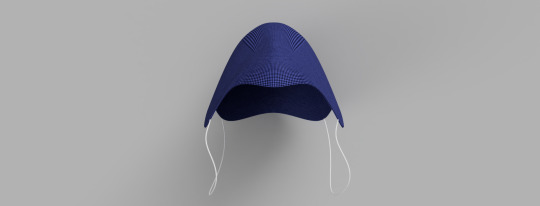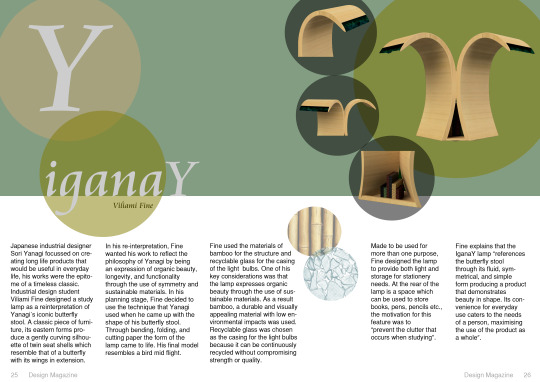Don't wanna be here? Send us removal request.
Video
tumblr
Viliami_Fine_Project_3_Video
The coronavirus pandemic has forced the entire world into unusual and unprecedented times. The universal response in preventing any risk of transmission has been to cover up mouth and face.
The maskeeter 19 is a two piece accessory which includes a face mask and an attachable scarf. The mask is designed to catch droplets when speaking or coughing. The attachable scarf allows for extra coverage and warmth when needed. This is attached by the velcro piece which fastens the two pieces together.
Unlike your usual face mask, the Masketeer 9teen is long-lasting because it is washable and reusable.
Made of organic cotton, this eco friendly accessory is made from natural processes, no harsh chemicals are used.
The two piece accessory makes the product multipurpose. Not only does the mask act as a barrier against droplets when speaking or coughing, but the attachable scarf also functions to keep the neck and throat warm.
The Masketeer 9teen has the minimal use of materials and process. the maximum outcome produced is stopping the transmission of germs and viruses, and having the use of both a face mask and a scarf.
0 notes
Photo
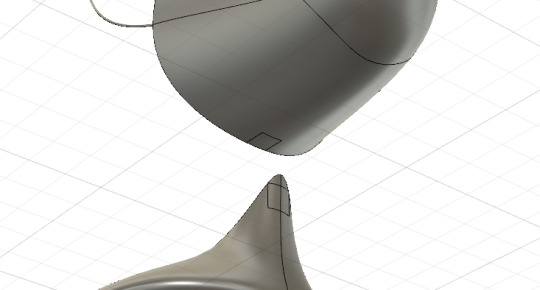

Velcro Attachments
Above are the velcro attachments. I did this by simply sketching a square and then using the split body tool to split the body with the sketched square.
0 notes
Photo
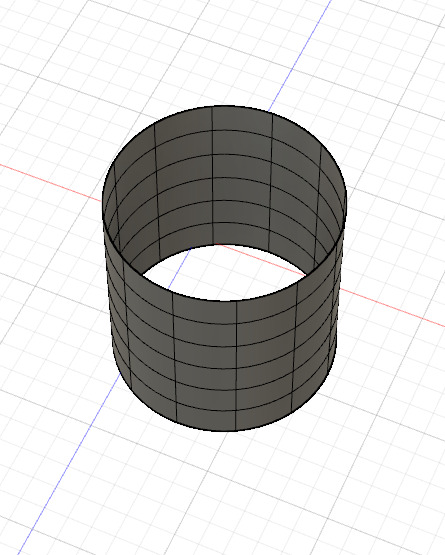



Attachable/Removable Scarf
Using the cylinder mesh tool, I designed the scarf. This has a velcro part attached to the tip of the scarf which is then fastened to the velcro attachment on the bottom of the face masks.
The scarf is used only when needed, hence the velcro attachment. It allows for extra coverage and warmth when needed.
0 notes
Photo
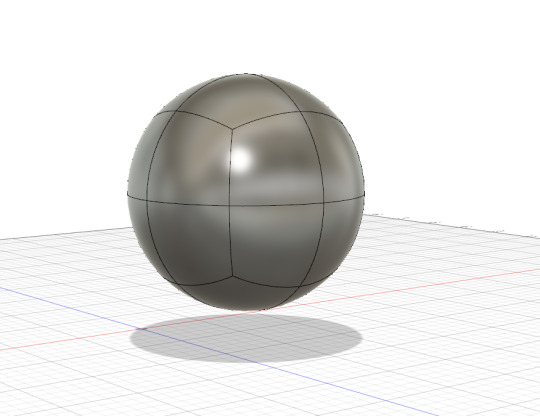





Face Mask
Working in Fusion 360, I started by sketching the circular mesh tool and then selecting half and deleting it which gave me a shelled sphere. From here I edited the form with the different faces and lines shaping it into a face mask. Once I was happy with the shape, designed to fit the human face, I then sketched to strings for the ears and thickened it.
The face mask is designed to catch droplets when speaking, coughing or sneezing.
I looked into the shape of current face masks and how it is designed to for the human face. This design will be organic cotton which is soft. Therefore, the masks will naturally fit the face when it is worn.
0 notes
Photo

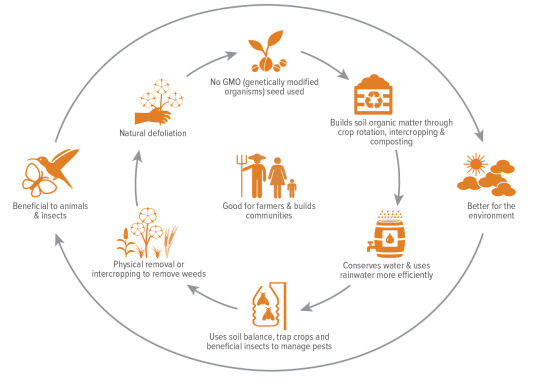
Organic Cotton Research
Organic cotton is cotton that is produced and certified to organic agricultural standards. Its production sustains the health of soils, ecosystems and people by using natural processes rather than artificial inputs. Importantly organic cotton farming does not allow the use of toxic chemicals or GMOs (genetically modified organisms). Instead, it combines tradition, innovation and science to benefit the shared environment and promote a good quality of life for all involved.
Reduces environmental footprint: No toxic chemicals are used in the growing of organic cotton. It doesn’t damage the soil, has less impact on the air, and uses 88% less water and 62% less energy. Conventional cotton uses about 16% of the world’s insecticides and 7% of pesticides.
Model for the future: By 2025, two-thirds of the world’s population may face water shortages. But organic cotton is 80% rain-fed, which reduces pressure on local water sources. The absence of chemicals also means that water is cleaner and safer. Cotton is often grown in water-scarce areas using irrigation and it takes 2,700 litres of water to make a conventional cotton t-shirt.
Fair price for sustainability: When you buy organic cotton you are investing in water conservation, cleaner air, better soil and farmer livelihoods. The price for organic cotton is therefore sometimes, but not always, higher. However, with demand on the rise, more choices will become available.
Promotes safe work & better livelihoods: Growing organic cotton keeps farmers and their families safe. They are not exposed to toxic chemicals in the field or through their food and water supply. It also means farmers grow more than one crop which supplements their food and income.
Bibliography:
http://aboutorganiccotton.org/
0 notes
Photo

From my research, an important point for me was that the most popular mask used during the global pandemic is the surgical mask. However, these masks are costly, in limited supply, contribute to landfill waste and are uncomfortable to wear for long periods. The surgical mask can pretty much only be used once which means it goes to waste and is not reusable. This is something I will take into consideration when designing my masks. I want something that is environmentally friendly, can be reused, comfortable to wear for long periods of time and as a bonus, have more than one use
0 notes
Photo


Face Masks Research
Face masks are one part of Infection Prevention and Control (IPC) measures used in health care settings. They are a type of personal protective equipment (PPE) used to help prevent the spread of infectious diseases. They must meet appropriate standards for use in health care, be worn correctly and in the appropriate context.
Non-medical face masks, including home-made facial coverings or cloth masks, vary greatly in composition and design. They are not required to meet the same safety standards that are used in health care to prevent the spread of diseases.
There is no convincing evidence one way or other to require the use of non-medical face masks for healthy people in the community to protect from COVID-19. There are potential benefits and potential risks with such use. Countries are taking different approaches based on their current COVID-19 context.
Non-medical masks could provide an additional element of protection in preventing someone who is infectious with COVID-19 spreading this infection to others. This is through potentially ‘catching’ large infectious respiratory droplets produced by the wearer, so they do not spread further. This is called ‘source control’.
Different types of mask offer different levels of protection. Surgical grade N95 respirators offer the highest level of protection against Covid-19 infection, followed by surgical grade masks. However, these masks are costly, in limited supply, contribute to landfill waste and are uncomfortable to wear for long periods. So even countries that have required the public to wear face masks have generally suggested such masks should be reserved for health workers or those at particularly high risk.
The most common used mask is the surgical mask. Surgical masks are designed to keep operating rooms sterile, preventing germs from the mouth and nose of a wearer from contaminating a patient during surgery. Although they have seen a rise in popularity among consumers during outbreaks such as the coronavirus, surgical masks are not designed to filter out viruses, which are smaller than germs.
Bibliography:
https://www.health.govt.nz/our-work/diseases-and-conditions/covid-19-novel-coronavirus/covid-19-health-advice-general-public/covid-19-use-face-masks-community
https://www.thomasnet.com/articles/other/how-surgical-masks-are-made/#_Types_of_Masks
0 notes
Photo

Covid-19 Research (Current Situation)
Coronavirus disease (COVID-19) is an infectious disease caused by a newly discovered coronavirus.
Most people infected with the COVID-19 virus will experience mild to moderate respiratory illness and recover without requiring special treatment. Older people, and those with underlying medical problems like cardiovascular disease, diabetes, chronic respiratory disease, and cancer are more likely to develop serious illness.
The COVID-19 virus spreads primarily through droplets of saliva or discharge from the nose when an infected person coughs or sneezes, so it’s important that you also practice respiratory etiquette (for example, by coughing into a flexed elbow).
You can be infected by breathing in the virus if you are within close proximity of someone who has COVID-19, or by touching a contaminated surface and then your eyes, nose or mouth.
Common symptoms include fever, cough, fatigue, shortness of breath, and loss of sense of smell. Complications may include pneumonia and acute respiratory distress syndrome. The time from exposure to onset of symptoms is typically around five days but may range from two to fourteen days. There is no known vaccine or specific antiviral treatment. Primary treatment is symptomatic and supportive therapy.
Recommended preventive measures include hand washing, covering one's mouth when coughing, maintaining distance from other people, wearing a face mask in public settings, and monitoring and self-isolation for people who suspect they are infected. Authorities worldwide have responded by implementing travel restrictions, lockdowns, workplace hazard controls, and facility closures. Many places have also worked to increase testing capacity and trace contacts of infected persons.
The pandemic has caused global social and economic disruption, including the largest global recession since the Great Depression. It has led to the postponement or cancellation of sporting, religious, political, and cultural events, widespread supply shortages exacerbated by panic buying, and decreased emissions of pollutants and greenhouse gases. Schools, universities, and colleges have been closed either on a nationwide or local basis in 172 countries, affecting approximately 98.5 percent of the world's student population. Misinformation about the virus has circulated through social media and mass media. There have been incidents of xenophobia and discrimination against Chinese people and against those perceived as being Chinese or as being from areas with high infection rates.
From my research, I found that the virus spreads primarily through droplets of saliva or discharge from the nose when an infected person talks, coughs or sneezes. Therefore, I will design a face mask covering one's mouth when talking, coughing or sneezing to prevent the spread of germs and the virus through droplets from the mouth.
Bibliography:
https://www.who.int/health-topics/coronavirus#tab=tab_1
https://en.wikipedia.org/wiki/COVID-19_pandemic
0 notes
Text
My “Good Design” Criteria
What is a good design?
Good design is original.
Good design is aesthetic.
Good design is long lasting.
Good design makes a product useful.
Good design is environmentally friendly.
Good design is culturally and socially relevant.
Good design is thorough down to the last detail.
Challenge:
This project challenges us to create and propose a radical design intervention in an event, situation, activity, trend, practice or custom of today. The overarching goal is to achieve “the maximum output from the minimum input” towards sustainability with an understanding that the minimum and maximum can be defined in various ways.
0 notes
Photo
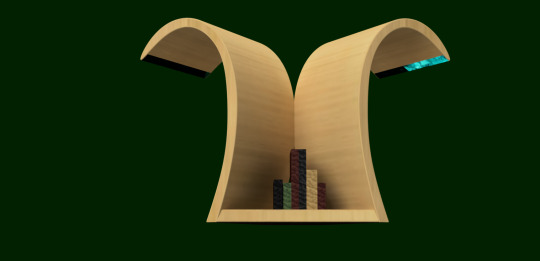
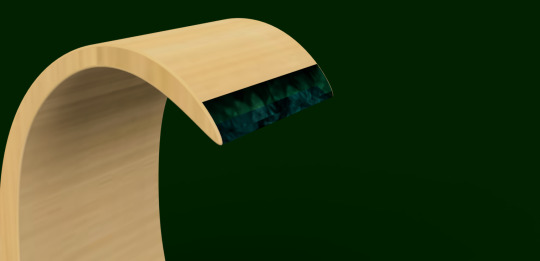
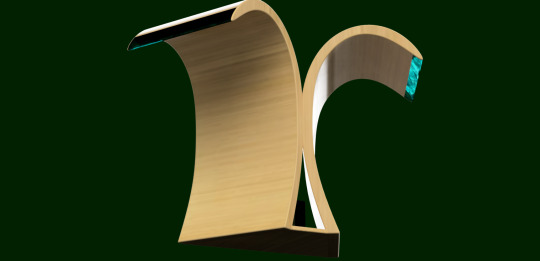
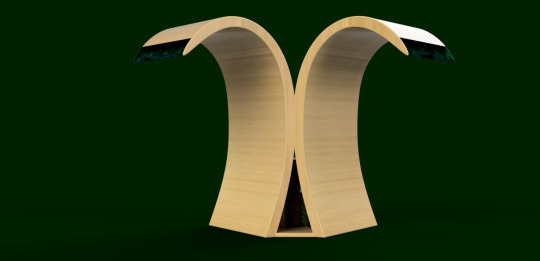

Final Renders
In my re-interpretation, I wanted my work to reflect the philosophy of Yanagi by being an expression of organic beauty, longevity, and functionality through the use of symmetry and sustainable materials. As shown earlier in my blog posts, I decided to use the technique that Yanagi used when he came up with the shape of his butterfly stool. Through bending, folding, and cutting paper the form of the lamp came to life. My final model resembles a bird mid flight.
The lamp is sustainable through the materials of bamboo for the structure and recyclable glass for the casing of the light bulbs. One of my key considerations was that the lamp expresses organic beauty through the use of sustainable materials. As a result bamboo, a durable and visually appealing material with low environmental impacts was used. Recyclable glass was chosen as the casing for the light bulbs because it can be continuously recycled without compromising strength or quality.
Made to be used for more than one purpose, I designed the lamp to provide both light and storage for stationery needs. At the rear of the lamp is a space which can be used to store books, pens, pencils etc., the motivation for this feature was to “prevent the clutter that occurs when studying”.
The IganaY lamp “references the butterfly stool through its fluid, symmetrical, and simple form producing a product that demonstrates beauty in shape. Its convenience for everyday use caters to the needs of a person, maximising the use of the product as a whole”.
0 notes
Photo

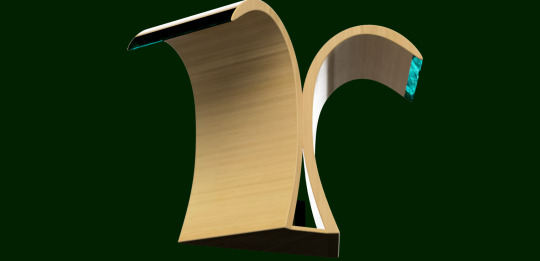

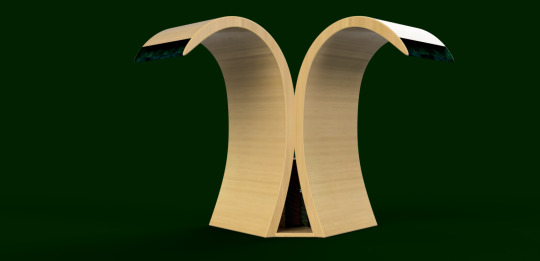
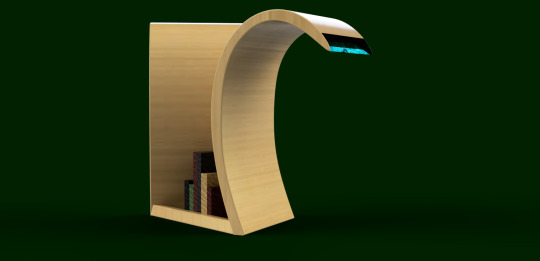
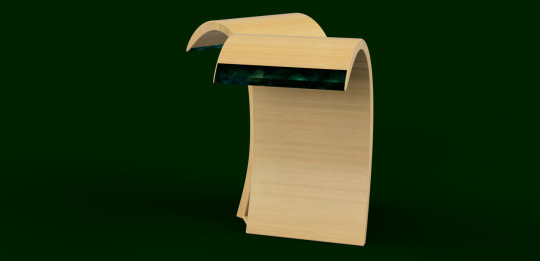
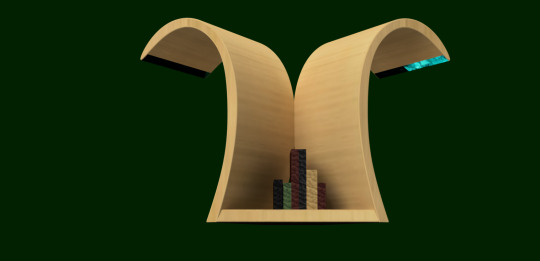
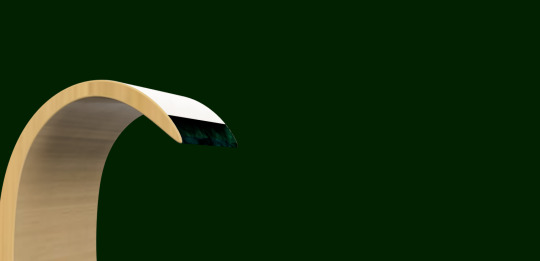

Second Renders
I was happy with these renders. I changed the roughness settings on the bamboo wood to make it look more natural. I also changed the texture of the glass and added recycled glass texture which also gave it the more natural look which I was happy with. The background/environment colour is what makes it green.
0 notes
Photo



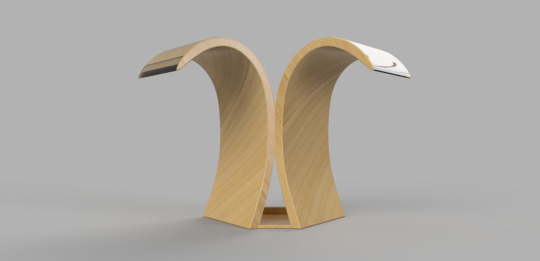






First Renders
My first few renders I wasn’t quite happy with. The wood was too reflective and didn’t look as “natural” as I wanted it to look. The glass didn't look like recycled glass either so I went back to rendering and tried to make the lamp look as natural and eco-friendly as possible.
0 notes
Text


Materials
I used the materials of bamboo for the structure and recyclable glass for the casing of the light bulbs. One of my key considerations was that the lamp expresses organic beauty through the use of sustainable materials. As a result bamboo, a durable and visually appealing material with low environmental impacts was used. Recyclable glass was chosen as the casing for the light bulbs because it can be continuously recycled without compromising strength or quality.
0 notes
Text
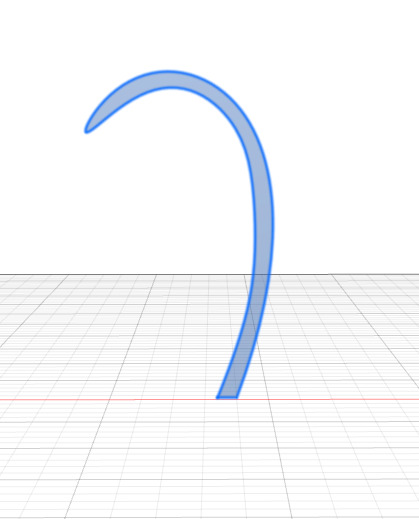





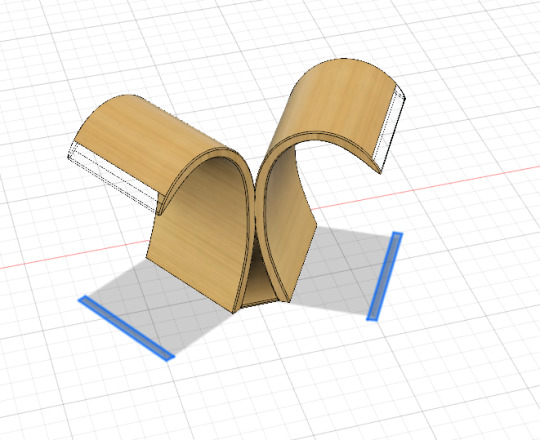
Fusion360
I started by sketching the main part of the lamp or the body of the lamp on a plane which is simply a curved line. I then extruded it making it wider which I wanted because it sort of mirrors the butterfly stool. I mirrored the extruded sketch to give it the “2 wooden shell” idea from the butterfly stool also.
I then drew the base of the lamp or storage space on the bottom plane and sketched a little rim to keep the stationary inside the storage space.
I then used the split body tool to make the casing for the light bulbs.
0 notes



